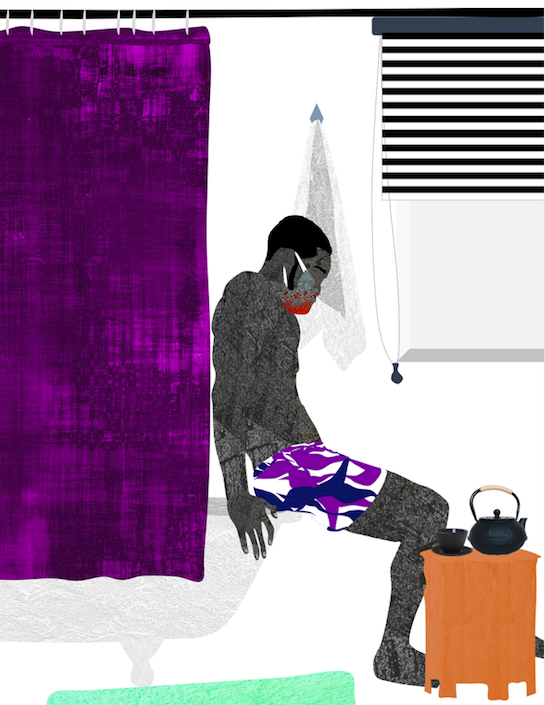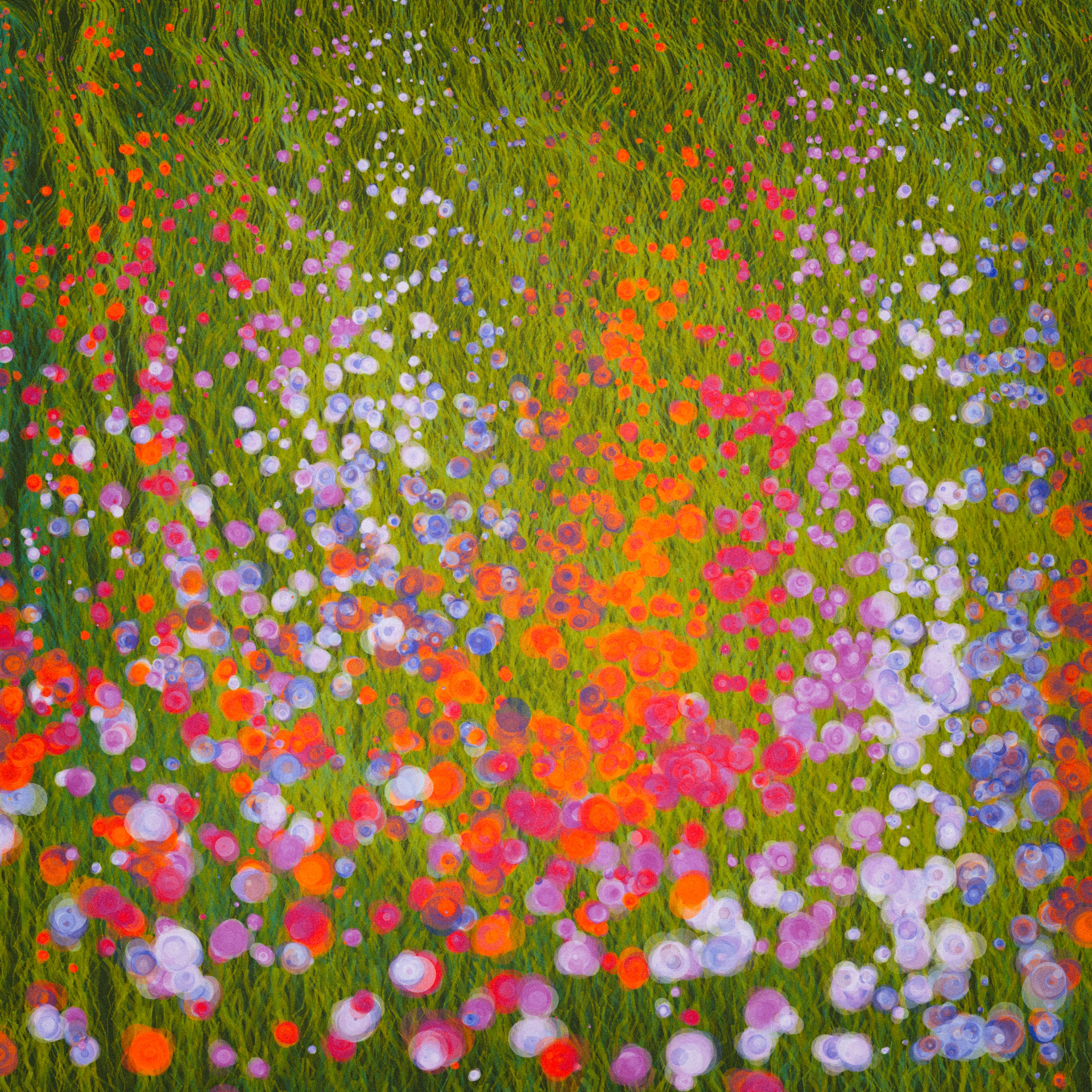KATE VASS GALERIE @ CADAF ONLINE 2020
Does art itself seek to bond with technology or even imagine new technologies to transform the world aesthetically? .. The computer appeared in the field of art as a necessity, at the express wish of the artists themselves, to solve their aesthetic problems, and to fulfill their artistic programs. - Peter Weibel in a A Little-Known Story about a Movement, a Magazine, and the Computer’s Arrival in Art: New Tendencies and Bit International, 1961-1973, © 2011 ZKM, p.43.
Each artist that Kate Vass Galerie will present at CADAF Online 2020 is a master of digital art and, with different tools and mediums, from Microsoft Word to AI and GANs, through the computer they can best express themselves and their creative processes.
Osinachi has specifically created a new series, called COVID-19: A GENERAL STATE OF ANXIETY. The works in the series engage with subjects who are navigating the realities of living in the global pandemic, COVID-19. He has documented history through this work, especially as it relates to how the pandemic has affected lives in his home country Nigeria.
The artworks specifically explore the various states of anxiety that has been prevalent as a response to the pandemic. For example, while some subjects are overwhelmed with ennui, others are looking for a way to stay alive during the pandemic – hence the embracing of spirituality/religiosity as means of salvation.
Sofia Crespo is asking herself ‘Can we use new technologies to dream up biodiversities that do not exist ?’ - Sofia is a generative artist working with neural networks and machine learning with a huge interest in biology-inspired technologies. She has been recently working on a new project ‘{}Chromatophores’ with engineer Andrew Pouliot where ‘these works are communicative meditation wherein the generative output of an aquatically trained neural network is interacted with, and gently manipulated, so as to create a (bio)mimicry of multiple cells acting in concert to convey tonality, atmosphere and accentuation’.
At the same time, Espen Kluge generative portraits series provides us with a thoughtful lens into the nuanced world of human emotion. Kluge gives generative art a new direction with work that is warm, universally approachable, and equally accessible to both the heart and the mind.
Kate Vass Galerie will be also presenting works by Manolo Gamboa Naon, Helena Sarin and David Young.
As the whole world is generally now more ‘online’ than ever, if we think about the ways of enjoying & collecting art, the digital trend is simply confirmed.
We at Kate Vass Galerie firmly believe in the great power of new technologies which can help especially during these unprecedented times; when it comes to art and blockchain, for example, we see how this can be an amazing tool to help artists and support new type of collectors while keeping trust and security together with uniqueness and provenance of the works at their best.This is the reason why we are proudly offering our collectors digital crypto-works which have been tokenised as NFTs on the blockchain. Moreover, as our mission is to link traditional and digital art, beautiful physical prints are also available.
Artists featured:
Sofia Crespo is a generative artist working with neural networks and machine learning with a huge interest in biology-inspired technologies. One of her main focuses is the way organic life uses artificial mechanisms to simulate itself and evolve, this implying the idea that technologies are a biased product of the organic life that created them and not a completely separated object. On the side, she is also hugely concerned with the dynamic change in the role of the artists working with machine learning techniques.
Manolo is a creative coder from Argentina. He loves to learn and experiment with different languages like Processing, Openframeworks, Unity, vvvv, Puredata and Javascript.He is obsessed with generativity, he likes programming images in which he works with geometric patterns, textures and overloading.
Espen Kluge is a polymath of renaissance proportions: a composer, a visual artist, and a creative coder. His portraits series provides us with a thoughtful lens into the nuanced world of human emotion. Kluge gives generative art a new direction with work that is warm, universally approachable, and equally accessible to both the heart and the mind.
Osinachi (born Prince Jacon Osinachi Igwe, 24 October 1991) is a self-taught digital artist whose work explores personal experiences within a technological environment. Osinachi, who grew up in Aba, Nigeria, produces drawings using Microsoft Word, where he utilizes the basic limited design palette of the word processing software to create narrative illustrations. Africa’s foremost cryptoartist, Osinachi‘s works are further registered in the blockchain and sold as non-fungible tokens (NFTs). In 2018, he became the first-ever Nigerian artist to showcase artworks at the Ethereal Summit, a conference in New York that seeks to bridge the gap between technology and art through blockchain.
Visual artist and software engineer, Helena Sarin has always been working with cutting edge technologies, first at Bell Labs, designing commercial communication systems, and for the last few years as an independent consultant, developing computer vision software using deep learning. While she has always worked in tech, Helena has been doing commission work in watercolor and pastel as well as in the applied arts like fashion, food and drink styling and photography.But art and software ran as parallel tracks in her life, all her art being analog... until she discovered GANs (Generative Adversarial Networks). Since then generative models became her primary medium. She is a frequent speaker at ML/AI conferences, for the past year delivering invited talks at MIT, Library of Congress and Capitol One. Her artwork was exhibited at AI Art exhibitions in Zürich, Dubai, Oxford, Shanghai and Miami, and was featured in number of publications including the Jan 2020 issue of “Art In America” magazine.
David Young is an artist who has spent his entire career at the leading edge of emerging technologies. From projects using early supercomputers and the dawn of the web, to contemporary global innovation and artistic initiatives, David has been a champion for new forms of creativity and expression enabled by technology. His current work explores how beauty and aesthetic experiences can give a fresh start to how we think about artificial intelligence. This work, which uses AI/machine learning, is a return to his roots where he began at the height of the 1980’s AI boom. His work has been featured in numerous exhibitions and magazines. He has taught at both Art Center College of Design and Parsons at The New School. David has a master’s degree in visual studies from the Massachusetts Institute of Technology’s Media Lab, and a bachelor’s degree in computer science from UCSC.












by Osinachi
Fine Art print, unframed Size: 30x40 cm , Edition of 5
Like all works in the “COVID-19: A General State of Anxiety” series, is an interpretation of one of the most shared problems during the coronavirus pandemic – the inability of many people to get a haircut. Allowing someone to give you a haircut comes with heavy trust, with the pandemic, many people are forced to trash that trust and just go for it with whomever they can get to give them a haircut.
Part of the series called COVID-19: A GENERAL STATE OF ANXIETY.
’The works in the series engage with subjects who are navigating the realities of living in the global pandemic, COVID-19. I have documented history through this work, especially as it relates to how the pandemic has affected lives in my home country Nigeria.
The artworks specifically explore the various states of anxiety that has been prevalent as a response to the pandemic. For example, while some subjects are overwhelmed with ennui, others are looking for a way to stay alive during the pandemic – hence the embracing of spirituality/religiosity as means of salvation.’ - Osinachi